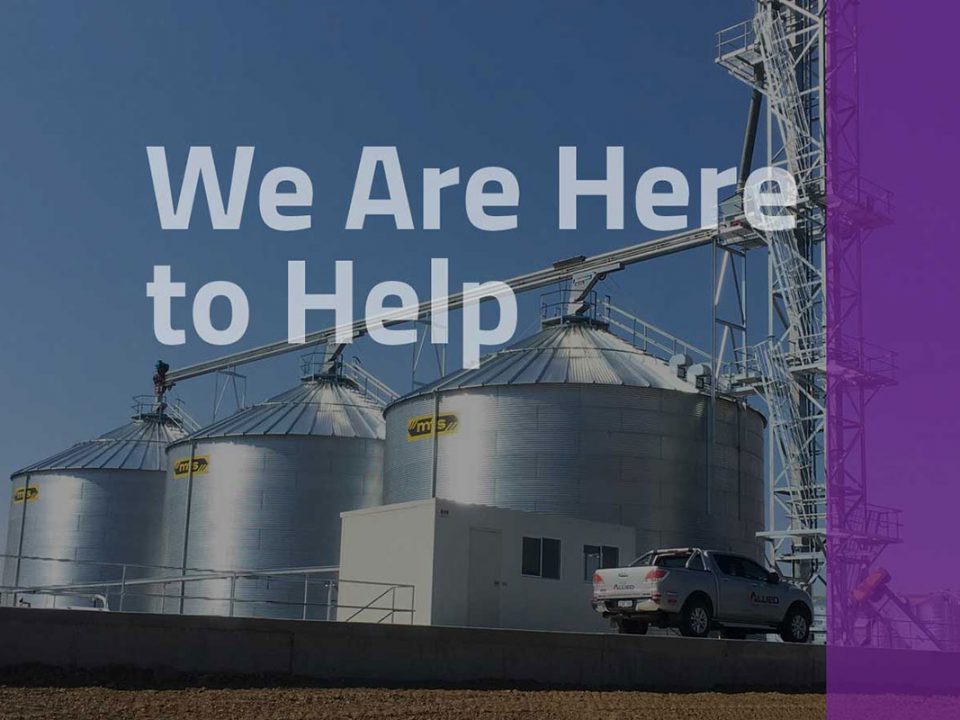When it comes to the dos and don’ts of grain storage, you’d be surprised at what the average grower is unaware of. Our 25 years in this business has taught us a thing or two and we want to share them with you. We’ve unearthed 5 potentially costly stuff-ups that many growers will be familiar with when it comes to grain storage. Here’s how to avoid them.
STUFF-UP #1
Not asking whether the silo is sealed gas-tight to the Australian Standard
How to avoid this stuff-up
Peter Botta, Grain Storage Specialist, offers some simple advice: So often, growers take the word of the manufacturer at face value when buying their silo and this is where they can run into problems. Don’t be fooled by a sales pitch. Do your own due diligence and make sure what you’re buying favours the quality of the grain you’re storing over cost. Just because a silo is sold as ‘sealed’ doesn’t, for example, mean it’s suitable for fumigation. You need to make sure it has undergone a 5 minute half-life pressure test in line with the Australian Standard AS2628 first to ensure it is in fact gas-tight, and fit for purpose for fumigation.
STUFF-UP #2
Not Having an End Goal in Sight
How to avoid this stuff-up
Botta advises that when thinking about your current system it’s really important to know what you’re going to do with it. Are you planning to store grain for longer than 3 months? If so there’s a good chance it will need fumigating. If you’re storing it long term do you have the ability to cool the grain effectively? Are you going to market it? Your storage system needs to reflect your plans and the subsequent timeframe for your grain. Understanding the long-term vision of your silo system will inform the infrastructure you implement to manage it effectively. The most important thing you should be asking, both yourself and the manufacturer is; is my storage system fit for purpose?
STUFF-UP #3
Not exercising good hygiene practices and routine monitoring
How to avoid this stuff-up
Grain storage is about a systems approach, says Botta. Many growers don’t get their hygiene right, regardless of storage type and management, hygiene of the system and harvesting and handling gear is the key to success. Cleaning down equipment and storages and applying a structural treatment such as a diatomaceous earth product (i.e. Dryacide) ensures insects are limited, habitat and food sources are removed making it harder for insects to establish and build their numbers. Regular monitoring of grain during storage allows the grower to implement control measures effectively and efficiently when needed. This also means understanding the types of pests and insects your grain and silo is likely to attract. If you understand that, you’ll be better able to prepare for the potential damage they could do and put the proper interventions in place.
STUFF-UP #4
Buying on the pretext of fumigation
How to avoid this stuff-up
Many growers buy a silo on the pretext they can fumigate, says Botta, but many don’t understand what that means. This comes back to ensuring they’re getting what they paid for and that the silo is fit for purpose. Growers need to get their heads around the job they want their silo to do. Growers selling their grain to market must make sure it meets the requirements in terms of applied chemicals and fumigants. Thinking about grain as a food product, not just a commodity, to be consumed by animals and humans provides a different slant to understand the importance of the storage system, managing the grain in storage and the product out-turned. Food safety standards are increasingly being considered by markets and directly relates to the storage environment and management.
STUFF-UP #5
It’s not about you, it’s about the market
How to avoid this stuff-up
Some growers tend to overlook the market and what it wants. Once grain is stored for the purpose of marketing then the storage system needs to meet the market requirement. Once they store the grain and want to market it, they become a part of the service industry. For this reason they must be prepared to evolve with the changing market needs so buyers keep returning. This may mean changing the way you do business. Pest management for one is constantly changing to fit with tougher scrutiny from regulatory bodies. Think ahead to the coming changes and how you might manage them as they may be difficult to fix retrospectively. Botta also points out the need to shape the way you present your product and get it in front of the buyer. Give them everything they need, to know that your grain is the one they should be buying.


